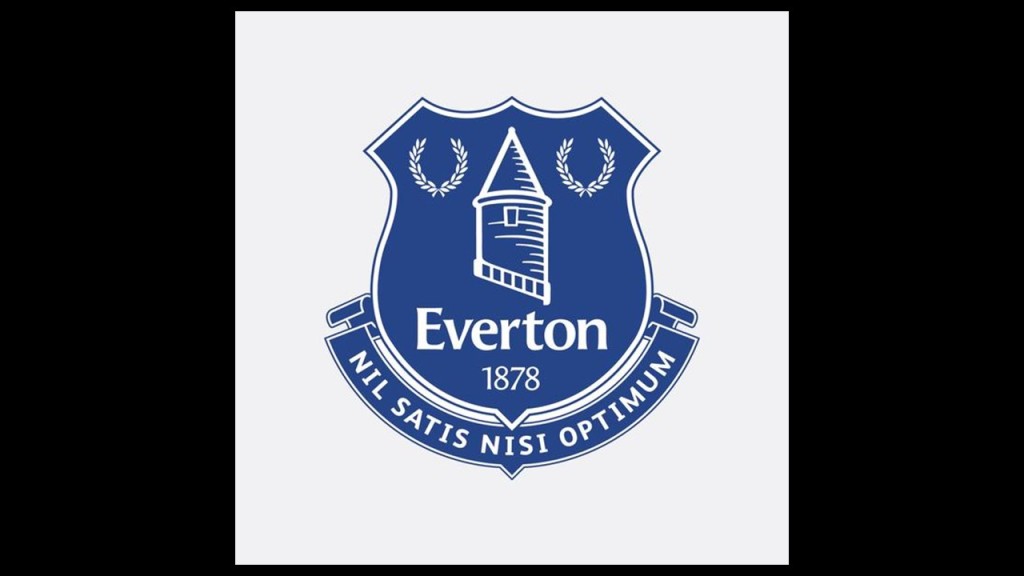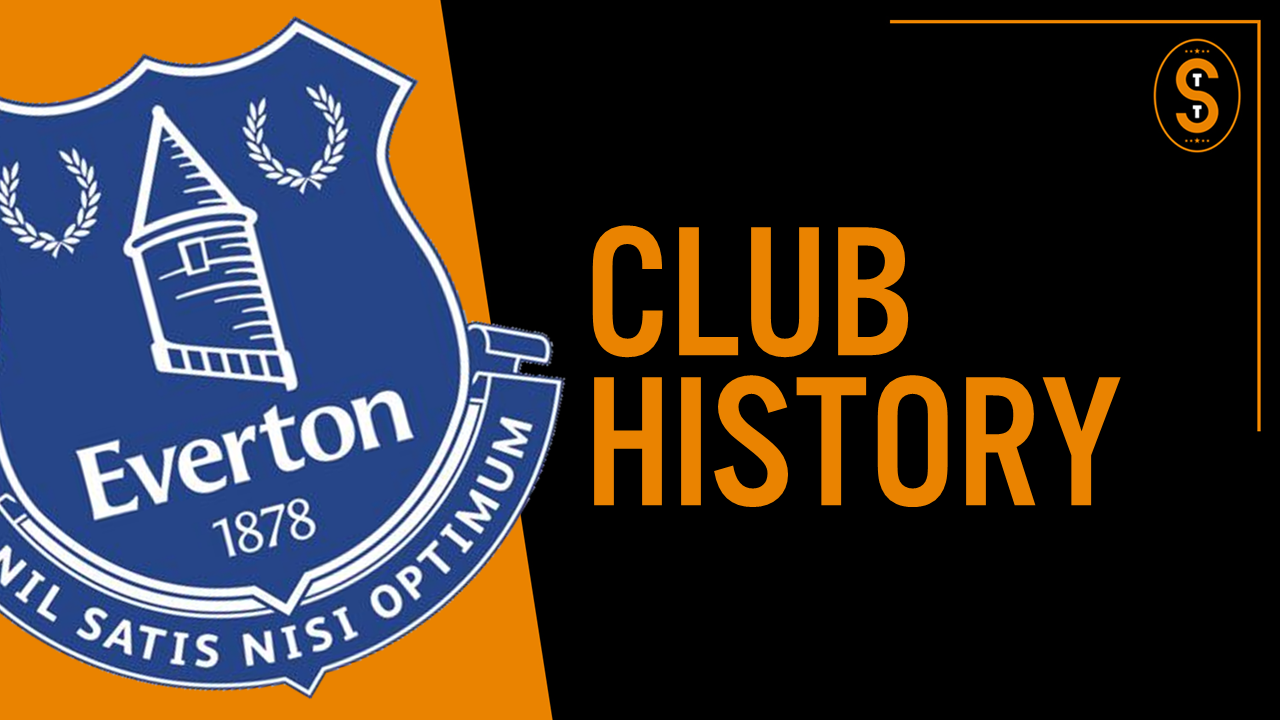Welcome to the Soccer Tavern, where we’re discussing the history, culture, and philosophy of the beautiful game. My name is Dave and we’re talking about Everton Football Club’s history in this video. Pull up a seat and let’s start the discussion.
Everton FC is located in the northeastern part of the city of Liverpool. Liverpool is located in the northwest part of England in the United Kingdom. Everton currently play in the Premier League. The club’s home ground is called Goodison Park, which was opened in 1892 and holds 39,572 people. Goodison was the first major soccer specific stadium built in England with stands and proper turnstiles. It’s also worth noting the club is planning to build a new stadium a couple miles west at the Bramley Moore Dock, set to open in 2022.
Origin
Everton FC’s history begins with St. Domingo Methodist Church, which was located in the Everton district of the city of Liverpool. In 1877, the church started a cricket team for young people in the parish. Because cricket can only be played in the summer, they started the St. Domingo Football Club one year later in 1878. It quickly became popular and people outside of the church’s congregation wanted to join.
So in November 1879, the club’s name was changed to Everton Football Club at a meeting in the Queen’s Head Hotel, near Ye Anciente Everton Toffee House, which we’ll discuss in our next section. The Everton name was a reference to the neighborhood where the church was located, but interestingly, the club has never actually been based in the district of Everton in Liverpool.
Nicknames
The club’s has 2 nicknames (1) the Blues and (2) the Toffees.
The ‘Blues’ nickname comes from Everton’s kit, which is primarily blue. It’s only really used locally to differentiate the club from Liverpool FC, who wear primarily red.
The Toffees nickname originates from the club’s association with two local Toffee Shops. ‘Ye Anciente Everton Toffee House’ which we mentioned in our previous section, and ‘Mother Noblett’s Toffee Shop’. These two shops were rivals and competed for Everton fans as customers before and after matches in the 1890s. Ye Anciente Everton Toffee House actually invented the famous Everton Toffees and were kind of the first candy shop on the scene at Everton.
Mother Noblett’s Toffee Shop then invented Everton Mints to compete. The mints became a huge success, which prompted Ye Anciente Everton Toffee House to strike up an innovative deal with the club to hand out Everton Toffees before the match kick-off. The club allowed it and the Everton Toffee Lady has become a tradition at the club handing out candy before the match. Funny enough though the “toffees” thrown before matches these days are usually “Everton Mints” since they were more popular.
With the history of these Toffee shops and their close affiliation with the club, the nickname came about and has stuck.
Crest
The club crest used today can be traced back to a design from 1938 when the Club’s Secretary, Theo Kelly, was asked to design a crest which would be used on official Club neck-ties. The crest didn’t make it onto kits until 1978 and versions of it have been used ever since.

Kelly’s design incorporated the Everton Tower, also called Price Rupert’s Tower, which is in the heart of the Everton district of the city. The Tower was originally a lock-up generally used to house criminals who committed smaller crimes for a night until they could be brought in front of the magistrates (or judges).
It’s a local landmark and is located very close to the Queens Head Hotel, where the club officially changed their name to Everton FC in 1879. At the bottom of the crest are the latin words “Nil satis nisi optimum” which translates to ‘nothing but the best is good enough’ and is the club’s motto. The year 1878 is a reference to the year the club was founded and the two laurel wreaths represent the Olympian sign of success.
Important Events
Obviously, the meeting in 1879 that changed the club’s name was very important in the club’s history, but since we’ve already discussed that, I want to highlight 3 other important events/time periods in the club’s history.
(1) Everton FC was one of the founding members of the Football League on April 17th, 1888 at the Royal Hotel in Manchester. This league would grow and evolve into the English football pyramid and over 100 years later, eventually become the Premier League.
(2) In the 1927-1928 season Everton forward Dixie Dean scored a record 60 League goals in 38 matches in the English First Division. This is still a record that stands today. Remarkably, he needed 7 goals in his final 2 matches to reach this record. He scored 4 against Burnley in the 2nd to last match of the season before scoring a hattrick on May 5, 1927 against Arsenal in a 3-3 draw. His record setting 60th goal came in the 82nd minute on a header from a corner kick. It’s unlikely that this record will ever be broken.
(3) The 1984-1985 season for Everton FC was truly remarkable. The Toffees crushed many teams along the way and went through multiple runs of many matches without suffering defeat. The club won the league by 13 points that season, securing the title on May 6, 1985 against Queens Park Rangers in a 2-0 victory with 5 matches remaining in the season. Everton amassed 90 points, scoring 88 goals and going unbeaten from January to May over the course of 28 matches. The club was utterly dominant and also won the UEFA Cup Winner’s Cup that season, beating Rapid Vienna 3-1 on May 15, 1985.
There are many other important events in the club’s history but for the sake of time, let’s keep this thing moving.
Supporters
There is no official nickname for supporters, but they often take on the nicknames of either Toffees or Evertonians and the name of their city around the world. I.e. the New York Evertonians or the Toronto Toffees.
Most interestingly, Goodison Park claims to be the only stadium in the world with a church in one corner of the stadium (St. Luke’s).
Noteworthy Players
Everton have had a lot of great players but I’m only going to highlight a few of them here.
- Dixie Dean – Everton’s record goalscorer and has a statue outside Goodison Park.
- Gary Lineker – Only with Everton for a few seasons, but won the 1986 Golden Boot (given to the tournament’s top scorer) at the World Cup while still an Everton player before he was sold to Barcelona. Most people know him nowadays as a famous pundit for the Premier League.
- Kevin Ratcliffe – was captain for Everton in the 1980s while the club enjoyed one of their best ever spells, winning multiple trophies.
- Wayne Rooney – began and looks to be ending his career with his boyhood club of Everton. In between, he became Manchester United and England’s all-time record goalscorer.
Noteworthy Managers
I’d like to discuss 2 managers in this section: Howard Kendall and David Moyes.
Howard Kendall took over as player manager in 1981 and managed Everton to the highest heights in the club’s history. He led the club to the 1983-1984 FA Cup, 1984-1985 First Division title along with the European Cup Winners’ Cup that season. And he concluded his trophy run with the 1986-1987 First Division title. He moved abroad for a few seasons before returning to Everton on two separate occasions in the ’90s but couldn’t replicate his success from the ’80s. He remains the club’s greatest and most successful manager.
Another manager who I’d like to mention here has fallen on hard times recently but had a great run with the club for over a decade. That is David Moyes. Moyes became Everton manager in the spring of 2002 and turned the club from perennial relegation battlers into a stable Premier League club that still to this day can compete for spots in the European places in the table (meaning finishing in the top 7 clubs of the Premier League). Though he left in 2013 having won 0 trophies in his 12 years with the club and hasn’t enjoyed much success managing other clubs, Moyes was instrumental in building Everton into the stable Premier League club we know today.
Rivals
Liverpool FC are Everton’s biggest rival with matches between the sides being called Merseyside Derbies in reference to the county that the city of Liverpool resides in and the local river. It’s a local rivalry as the 2 clubs play in stadiums less than 1 mile apart and the rivalry dates back to Liverpool FC’s founding. Everton actually played at Anfield, which is Liverpool’s home ground, but there was a rift between the ownership group and the club left Anfield. The owner of Anfield then left the Everton board and started his own club, Liverpool FC.
Though this happened in the 1890s, the rivalry didn’t really heat up until the 1980s when both clubs became dominant both in the English first division and European competitions. The two clubs have played each other over 230 times. Interestingly, matches are incredibly intense on the pitch and in the stands, but there is no hatred between the fans seen in other rivalries. It’s common to see families made up of both Liverpool and Everton supporters, which makes this one of the most unusual derbies in England.
Stats & Records
The stats and records we’re about to discuss are as of February 2018 when I am recording this video.
Everton have spent 115 seasons in the top flight in their history.
The club has 15 major trophies including:
- 9 first division titles
- 5 FA Cups
- 1 European Cup Winners’ Cup
The club’s record first team appearance holder is Neville Southall with 750 appearances.
The club’s record goal scorer is Dixie Dean with 383 goals.
The Toffee’s all-time clean sheet record is held by Neville Southall with 269.
The club’s record transfer purchase was Gylfi Sigurdsson from Swansea City on August 16, 2017 for about £45M.
And Everton’s record transfer sale was Romelu Lukaku to Manchester United on July 10, 2017 for about £75M initially.
One last interesting fact about the club: Everton have spent more seasons in the top flight than any other English club (115 seasons). They have only had 4 league seasons outside the top flight since it began in 1888.
So there you have it… a bit of history on Everton Football Club. Let’s continue the discussion in the comments section below this video.
Thanks for stopping by the Soccer Tavern. Hope to see you again sometime soon. Cheers.
